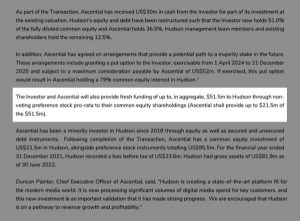— June 8, 2018

Let’s face it, your recipients have no tolerance for boring writing. You didn’t write the bestselling novel they’ve been looking forward to devouring. They haven’t settled into the sofa with your message in hand, looking forward to several hours of savoring your wit and wisdom. Nope. Far from it.
If you don’t snag them right away, there’s little chance they will even make it to your call to action, let alone be convinced to click. Your designer can do amazing things with color and images, but your writing absolutely must pop.
How do you make sure your messages get read? Here are eight tips:
1. Write in the second person
Your writing should be about your customer, not you. That means you must lose the first-person pronoun. That’s right, there should be no “I” in email marketing (even though, technically, there are two). “Writing in the second person means using the pronouns ‘you,’ ‘your,’ and ‘yours,’ writes Lindsay Kolowich on the HubSpot blog. “It means you orient the copy towards the reader, not yourself. This is a subtle tactic that helps you stay value-oriented.”
2. Pay attention to every word
“Word choice is crucial to make reading your email a great experience, and since most emails are short, every word counts,” writes Sharon Hurley Hall at OptinMonster. Hurley’s suggestions for finding right words include employing analogies and other literary techniques, and using words that invoke the five senses, which research has proven “are more likely to be memorable and impactful.”
3. Write for scanners
It’s not just the words you use that make an impact – how they appear in your message can also make a big difference. “Don’t overwhelm a reader with long paragraphs and lots of copy in the components of the email,” writes FulcrumTech. “Creating an email design that breaks up your email-marketing copy with punchy subheads, numbered and bulleted lists, and small bites of information will allow subscribers to quickly read it and grasp your main message.”
4. State a deadline
“Email copy should compel subscribers to act instantly,” writes Lisa Furgison McEwen at the Pinpointe Marketing “Once they’ve read your message, you need them to click and convert. To do that, give subscribers a deadline. Every sale should have an end date and every coupon should have a quick expiration date. The idea is to get subscribers to act fast, so they don’t miss the deal.” Fear of missing out can be a very useful driver of engagement and conversions, as we discussed in this post.
5. Make sure that writing and design complement each other
“Email text does not exist in a vacuum: it’s surrounded by images and other template elements, and changed by colors, fonts, backgrounds, line lengths, and positioning,” writes Mark Brownlow at Smart Insights. “All of this affects the tone, readability, impact and influence of the words. What works well in a plain text file can take on a different hue when placed into the email itself.” Unlike writing a novel, which is a solo effort, it takes collaboration to create a successful email message. Writers need to communicate successfully with designers, and vice versa.
6. Keep your language simple
“Scrap jargon, cut scientific words, and replace long words with short words, writes Henneke Duistermaat at Copyblogger. “Plain English helps your reader comprehend your message. And complex language doesn’t make you look more intelligent. Your readers like to be lazy, don’t exhaust them. They’re not interested in learning your extensive vocabulary. Just help your readers solve their problems.”
7. Focus on clarity
“Everyone wants to write catchy prose,” suggests the Kajabi blog. “It’s understandable, but clarity must come first. If your readers don’t understand why you’re sending your email, they’ll hit the ‘delete’ button and move on. Don’t squander your time on pithy puns and wry witticisms. Once you pick a goal for the email, make sure every sentence, image, and link furthers that goal. Don’t allow yourself to stray off-topic, even if you think of something funny or entertaining to share.”
8. Make sure you align your subject line with your copy
Your copy absolutely must keep the promise your subject line makes. You’ll lose the reader as soon as they spot a disconnect. “Keep in mind that delivering what you promise is critical in the world of email, and only people who can truly do this succeed in the long run,” writes Julia McCoy at Express Writers. “With this in mind, keep your subject text in line with your body copy. In addition to providing better value for readers, this will also go a long way toward enhancing your reputation as a company and making sure that customers want to click your material in the days to come.”
Digital & Social Articles on Business 2 Community
(68)







